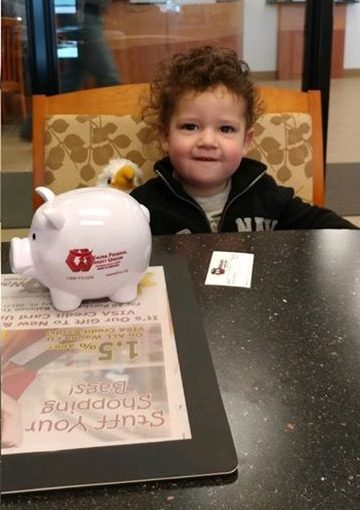It’s back to school time…so how do you teach your kids dollars and sense?
Are your children prepared to manage money and save for the future? Do you take the time to teach them about the value of a dollar and the difference between needs and wants?

According to the Council for Economic Education, despite the recognition that financial literacy is critical to succeed in modern society, study after study show that many Americans continue to lack basic understanding of financial concepts, often resulting in dire consequences. Yet there is hope for improvement if we work to make financial education a priority in our schools.
With little financial education in schools today, the role of financial educator generally falls to the parent. So, be prepared! Be sure to look into the financial education services offered at Wauna Credit Union.
A recent article in Parents Magazine states that “5- and 6-year-olds are starting to develop the cognitive skills necessary to understand basic monetary concepts, such as identifying coins, figuring out how to count change, and matching small amounts of money to items they want to buy.” How do we start teaching our young ones about money?
Meet one father of four and a financial planner with CUNA Mutual Group, Phillip Hansen, who says the earlier you start educating your children, the better. He has some great advice for teaching young kids the value of physical money, setting goals, earning enough to reach goals, as well as the concept of opportunity costs. An ‘opportunity cost,’ for example, is if you spend time and money going to a movie, you cannot spend that time at home reading a book, and you can’t spend the money on something else.
“One of the first things I’ve taught my 5-year-old twins is that money is an actual, physical thing that they can earn and save and choose how they want to spend,” says Hansen. “It’s confusing for kids to see us plop down a plastic credit or debit card, as it creates a false sense that money isn’t real and if I want something, I just pull out the piece of plastic. So, we teach our kids that they can do chores around the house to earn money and then save it for items they are passionate about.”
Hansen recommends:
- Talking to kids about the physical concept of money and handing money directly to the cashier when buying something
- Allowing them the opportunity to do small, age-appropriate chores around the house to earn money
- Giving them a glass jar to save money and watch the savings grow
- Helping them set goals for their money, like saving for a special new toy

Understanding the concept of opportunity costs, where they understand you may have to choose between things like a new toy or going to the movies
“Learning opportunity costs is one of the most important life concepts; opportunity costs are in everything in life—if I buy these really cool shoes, then I cannot have that new video game; or if I choose this college degree over that degree, will it bring me as much enjoyment?” says Hansen. “Teaching the value of money, goal setting, and helping kids understand what’s important to them is really Financial Literacy and Education for Children How to teach your kids dollars and sense to life in general. It’s the first step to helping them succeed and make informed decisions.” So, what else can parents do to teach kids about the value of money and making choices?
We’ve made a list:
- Discuss what money is and how it works
- Engage in family discussions about how you want to spend the money, where to vacation, and what to give up to get there
- Look for teachable moments
- Give an allowance or let them earn money
- Start a savings account at a credit union
- Set a savings goal
- Teach them to budget—how do I make it until my next allowance?
- Visit a credit union with your child
- Let them struggle a bit
- Be a good example
“My kids are still very young but I’ve already started helping my 5-year-olds understand the value of an hour of work—they cannot really understand the concept of a dollar, but if we talk about how many hours of chores it would take to buy a certain toy, they get it,” says Hansen. “I help my clients understand this notion as well—and whether they can really afford to buy that new house or if they should hunker down for a few more years and save up for the dream home with a little more planning.”
Hansen also says he helps a lot of parents understand that they don’t need to pay for everything for their kids—it’s so important to teach them responsibility and discipline around money and having a little ‘skin in the game.’ What is the difference between your wants and your needs? He says without a good, solid grasp of the value of money and its power, kids have a sense of entitlement that could become the root cause of struggle and brutal reality checks when they hit the real world.
“It simply is never too early to prepare your children to understand money, how it works, and all of the opportunity costs associated with making decisions and life choices,” says Hansen. “Those lessons provide the foundation for a happy and fulfilled life.”